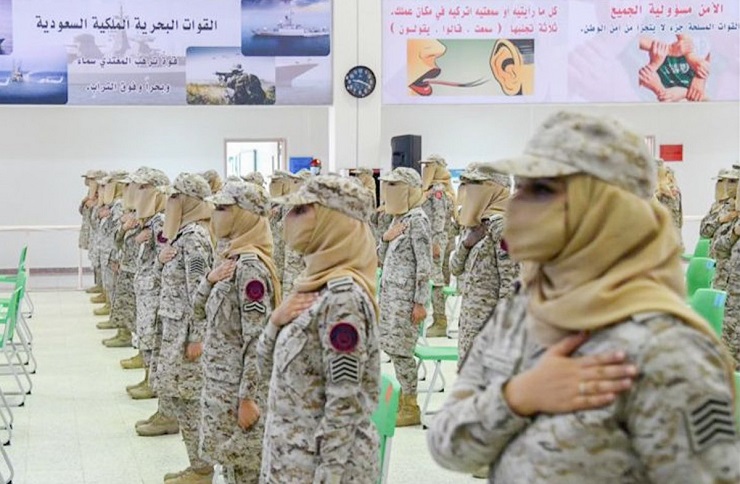The situation of women in the Arab world may seem very difficult to many people and is almost the same throughout the region. But in fact, Arab countries are distinctly different, and many of them have changed significantly in recent times, including women’s status.
There are Arab countries where the situation of women was very vulnerable throughout the 20th century, such as Saudi Arabia, Kuwait, Jordan, Northern Yemen, and Sudan. In Saudi Arabia, for example, women could not vote, drive a car, appear in public unaccompanied, or dispose of their property independently. But in recent years, realities in this country have begun to shift values toward more freedom for women. Much of this is also due to generational change: young people have the opportunity to get a good education – including overseas, travel, and broaden their understanding of what is acceptable and normal. The changes in women’s rights and status are also due to pressure and demands from the Saudi population and the international community, resulting, for example, in women in the Kingdom gaining the right to drive cars as of October 2019 after a long campaign starting in early 1990s in support of this right.
The role of Saudi women in society has been changing rapidly since King’s son Mohammed bin Salman al Saud became the Crown Prince, allowing women to drive cars, attend sports matches, and serve in the army and police force.
The most recent developments regarding women’s integration into Saudi society came with the Kingdom’s official Vision 2030 programme, which, among other things, envisioned an increase in women’s labor force participation in Saudi Arabia from an average of less than 20% to more than 40%. As a result, for example, women have been allowed to pursue a career in the military.
At first glance, the Saudi Armed Forces look not bad at all. According to Global Firepower, a portal that analyzes the military power of individual countries, Saudi Arabia’s army has just over half a million troops, ranking 17th out of 139 countries surveyed. The Saudi army is considered one of the strongest in the Arab world, being the world’s largest arms importer, despite the arms embargo declared by many nations on the Saudis, who have been under constant criticism for years due to the many civilian casualties of bombing Yemen.
The official recruitment of women into the Kingdom’s armed forces was launched as part of Vision 2030. The Saudi Ministry of Defence has opened the door for women who wish to apply for military service, by allowing them to serve at various levels at the ranks of First Soldier, Corporal, Sergeant, and Staff Sergeant in the Army, Air Force, Navy, Air Defence, Strategic Missile Forces, and Medical Services of Armed Forces.
To join the army, one must pass an examination, undergo a medical check, and present documents without a criminal record. Women between the ages of 21 and 40, at least 155 centimeters tall, who have graduated from college can sign up for selection. Civil servants and female citizens married to foreigners will not be taken into the army.
The Saudi Arabian newspaper Arab News reported on the appearance of the first all-female military unit in the Saudi armed forces earlier this year.
And now, the Saudi Press Agency Al Arabia reported on September 2, citing the Saudi Press Agency, the first group of female Saudi servicemen have already completed their combat training. They were trained at the Armed Forces Women’s Training Center from May 30 to September 1.
As a result, pictures of Saudi female soldiers clutching modern replicas of the famous Arabian shamshir sabers, traditionally ornate with gold, have often appeared in the Saudi media recently. Although similar “saber props” of non-commissioned officers are common in the British, American, and other armies, it is clear to all that they are not designed for modern combat. But it looks beautiful and moderately archaic, especially in the hands of Saudi female military personnel, which is probably what it was designed to do.
In September, female soldiers of various ranks have already participated in a military parade formation in the capital of the country, Riyadh, and the city of Jeddah to mark the 91st anniversary of Saudi National Day, as reported by Dhaka Tribune.
The service of women in the armed forces, which is considered an inherently male institution and “the last fortress of men,” remains a subject of debate and controversy around the world, including in Saudi Arabia. While some argue that women’s military service should be conditioned on their right to work on an equal basis with men even in the military sphere, opponents say that the mere presence of women in the army undermines its inherent team spirit and combat effectiveness. Women cannot bear the physical and psychological suffering they may be subjected to if they fight in the front lines or being captured.
Some countries have long embraced the idea of women in the military. A number have gone even further by allowing women to participate in combat missions equal to men. These are countries such as the United States, Canada, Norway, Sweden, Israel.
In some Arab countries, such as Egypt, Kuwait, and Tunisia, the issue of women’s conscription is still a matter of debate. However, Arab women began serving in the army as early as the 1960s and played an essential role in the national liberation of their countries from colonialism and external oppression. It is especially true for women in Algeria and Palestine. The same applies to Kurdish, Iraqi, and Syrian women who have been actively fighting the radical terrorist groups Al-Qaeda and DAESH (both banned in the Russian Federation) in recent years, defending their countries and beliefs with weapons in their hands.
Vladimir Platov, expert on the Middle East, exclusively for the online magazine “New Eastern Outlook”.
 RSS Feed
RSS Feed















 October 20th, 2021
October 20th, 2021  Awake Goy
Awake Goy 
 Posted in
Posted in  Tags:
Tags: 













